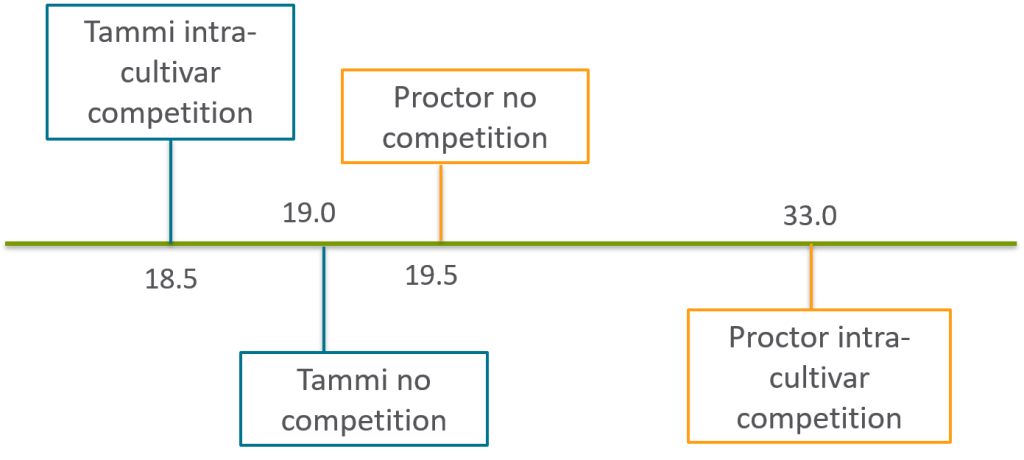My first data PhD paper was published today (YAY!!) looking at temporal dynamism of nutrient uptake. Temporal dynamism is the timing and rate of a process (see my post ‘Is timing everything?’ for more background about temporal dynamism in general). I’m particularly interested in the temporal dynamics of nitrogen and biomass accumulation – i.e. when and how quickly are plants taking up nitrogen and increasing biomass.
The timing and rate of nitrogen and biomass accumulation could potentially be important for coexistence between plants competing for limited resources. Plants may offset peak nutrient uptake when in competition with another individual to reduce competition and promote coexistence, by occupying a subtly different temporal niche. To look at this I used barley (Hordeum sp.) as a model species because we know a lot about the dynamics of nitrogen and biomass accumulation of barley from agricultural research.

We chose two cultivars of barley that are physiologically similar but have very different temporal dynamics to carry out a pot-based study. Tammi is an early and Proctor a late cultivar of barley. I grew these in isolation, inter-cultivar competition or intra-cultivar competition (in a pot with their own cultivar), and harvested every 5 days for two months. The shoot nitrogen and total biomass data were then modelled to produce an estimate of when the peak rate of nitrogen and biomass accumulation occurred.

We expected that peak nitrogen and biomass accumulation of Proctor would be later than Tammi as it is the later cultivar, but found something quite different. All the estimates for peak biomass accumulation rate were close to each other, with no significant effect of competition on timing for either cultivar. However, this was not the case for nitrogen accumulation rate. In intra-cultivar competition both Tammi and Proctor significantly shifted peak nitrogen accumulation rate; Tammi earlier by 0.5 days and Proctor later by 14.5 days. There was no significant shift with inter-cultivar competition.

This suggests that Tammi and Proctor are able to identify and respond differently depending on the identity of a neighbouring plant. They could do this via root exudates or root volatiles as a form of kin recognition. Delaying peak nitrogen accumulation rate could reduce competition for nitrogen and promote coexistence with a neighbour of the same cultivar, although the mechanism is not clear at the moment.
Shifts in the temporal dynamics of nitrogen uptake had an effect on the plant interaction intensity and direction. Plants in intra-cultivar competition had a lower intensity of competition compared to plants in inter-cultivar competition. However, inter-cultivar competition had a higher land equivalent ratio (LER) compared to intra-cultivar competition, suggesting a benefit of inter-cultivar compared in intra-cultivar competition. These contrasting results indicate the use of multiple metrics at only one time-point can lead to contrasting results.
The temporal dynamics of nitrogen accumulation were affected by plant-plant competition depending on neighbour identity, with the two cultivars also responding in different directions. More studies focussed on the mechanism of this process, including plant-soil interactions will help us understand the role of temporal dynamism in plant communities.
Check out the full paper here


1 thought on “Time for barley dynamics?”